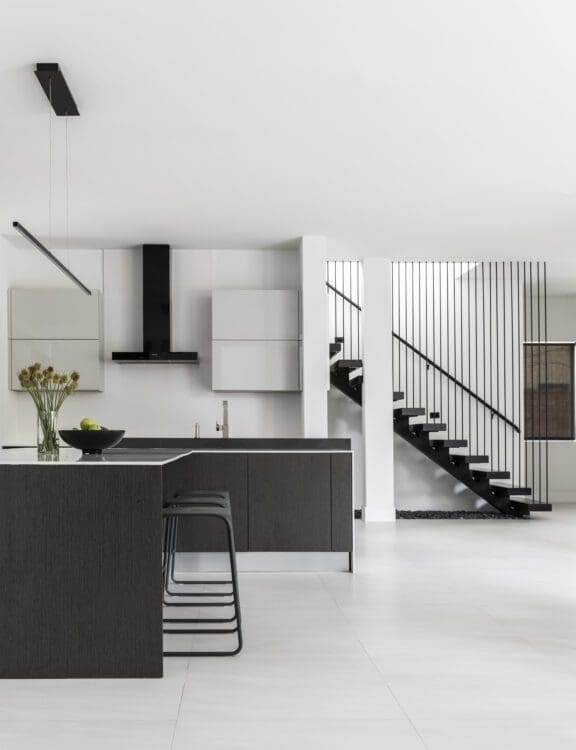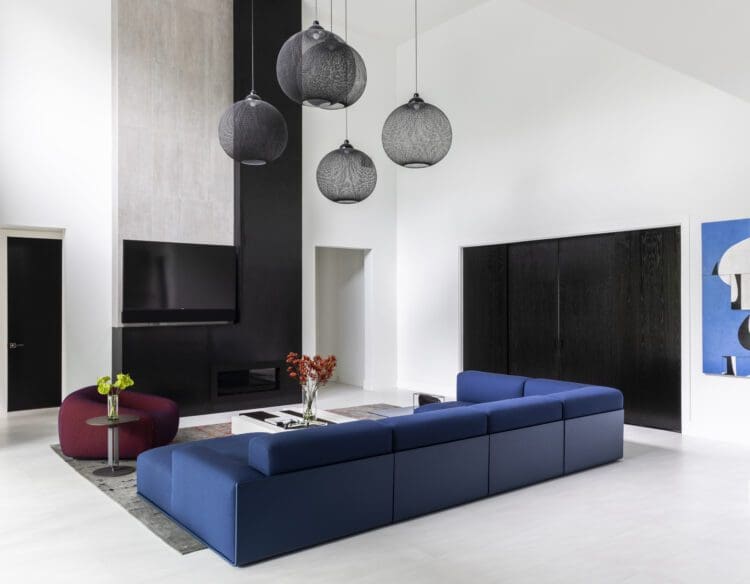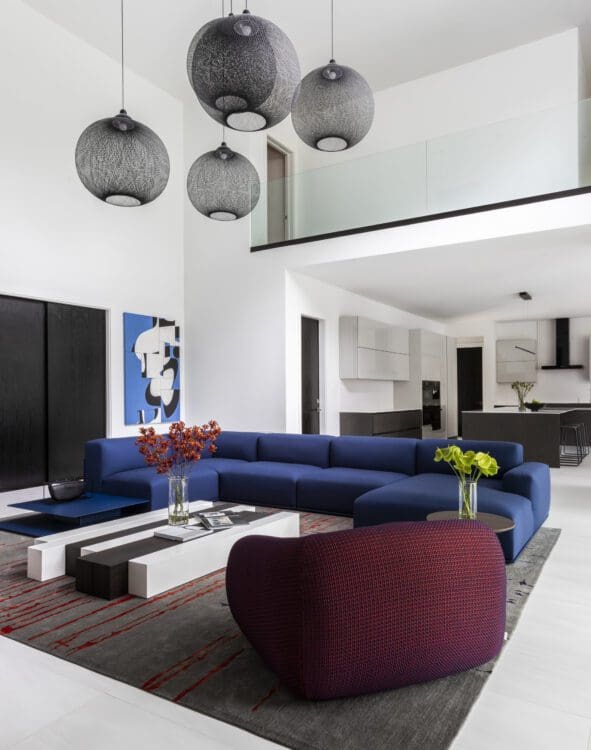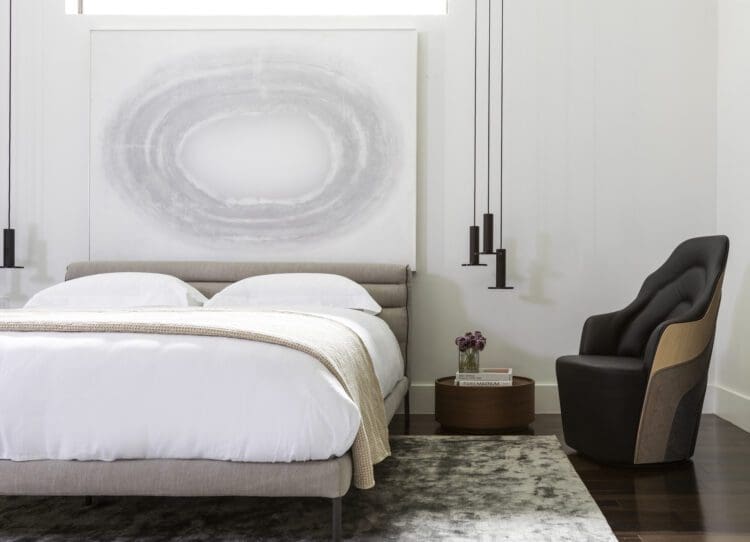Contemporary interior design has become an increasingly popular style choice for homeowners who seek a modern and sophisticated living space. With its sleek lines, minimalist approach, and emphasis on functionality, contemporary design offers a fresh and timeless aesthetic that appeals to a wide range of individuals. In this article, we will delve into the world of contemporary interior design, exploring its defining elements, key features, and how it can transform your home into a true masterpiece.




Definition of Contemporary Interior Design
To understand contemporary interior design, it is crucial to establish a clear definition. Contemporary design refers to the style that is “of the moment” or current, showcasing the trends and influences prevalent in today’s design world. It is often confused with modern design, but contemporary design has its own distinct characteristics that set it apart.Significance and Popularity of Contemporary Interior Design
Contemporary interior design has gained significant popularity, particularly among those who appreciate a fusion of elegance, simplicity, and functionality. Its appeal extends beyond trends, as contemporary design embodies a timeless quality that can adapt to changing tastes while remaining stylish and relevant. The clean lines, open spaces, and emphasis on natural light contribute to a sense of calm and serenity, making it an attractive choice for homeowners seeking a modern sanctuary.
Brief Overview of the Article’s Content
Throughout this article, we will explore the fundamental elements that define contemporary interior design. From the choice of colors, materials, and furniture to the integration of technology and personal style, we will delve into the nuances and details that make contemporary design so captivating. Whether you are considering a complete interior overhaul or simply want to infuse a touch of contemporary flair into your existing space, this article will provide you with the inspiration and guidance to achieve your vision. Let’s embark on this journey into the world of contemporary interior design and unlock the secrets of creating a stunning, modern home.Elements of Contemporary Interior Design
Contemporary interior design is characterized by a set of distinct elements that work together harmoniously to create a cohesive and stylish space. Understanding these key elements is essential for capturing the essence of contemporary design and incorporating it into your own home.Minimalism and Clean Lines
At the core of contemporary interior design lies the principle of minimalism. Clean lines, uncluttered spaces, and a sense of simplicity define this aesthetic. Furniture and architectural elements are often sleek and streamlined, devoid of excessive ornamentation. The focus is on creating a visually balanced and harmonious environment that exudes a sense of calm and order.Use of Neutral Color Palettes
Contemporary design embraces a neutral color palette as its foundation. Shades of white, beige, gray, and taupe are commonly used to create a backdrop that allows other elements to take center stage. Neutrals also contribute to the overall sense of serenity and sophistication that is characteristic of contemporary spaces.Incorporation of Natural Materials
To add warmth and texture, contemporary interior design often incorporates natural materials such as wood, stone, and metal. These elements provide a connection to the natural world while adding visual interest and depth to the space. Sleek hardwood flooring, exposed brick walls, and polished concrete surfaces are all examples of how natural materials can be used to enhance contemporary interiors.Emphasis on Open Spaces and Light
Contemporary design embraces the concept of open and airy spaces. Large windows, skylights, and open floor plans are commonly used to maximize natural light and create a sense of spaciousness. The interplay between light and shadow adds depth and dimension to the space, further enhancing its modern aesthetic.Integration of Technology and Smart Home Features
In keeping with the ever-evolving nature of contemporary design, technology plays a significant role in shaping the modern home. Smart home features, integrated audiovisual systems, and energy-efficient technologies are seamlessly integrated into contemporary interiors. From automated lighting and temperature control to cutting-edge appliances, technology enhances both the functionality and convenience of the space.Bold and Artistic Focal Points
Contemporary design often incorporates bold and artistic focal points that serve as statements within the space. This could be a captivating piece of artwork, a sculptural light fixture, or a unique furniture design. These focal points add visual interest, spark conversation, and infuse personality into the overall design scheme. By understanding and incorporating these key elements of contemporary interior design, you can create a space that is not only visually stunning but also reflects the essence of modern living. In the following sections, we will explore each of these elements in more detail, providing insights and inspiration to help you bring contemporary design to life in your own home.Furniture and Accessories in Contemporary Interior Design
Furniture and accessories play a crucial role in shaping the overall aesthetic of a contemporary interior. In this section, we will delve into the key characteristics and considerations when selecting furniture and accessories that align with the principles of contemporary design.
Sleek and Functional Furniture Designs
Contemporary interior design favors furniture pieces that are both sleek and functional. Clean lines, smooth surfaces, and minimal ornamentation are characteristic of contemporary furniture. Opt for pieces with geometric shapes and a streamlined silhouette. Sofas and chairs with straight edges and slim profiles create a sense of visual lightness and contribute to the overall minimalist aesthetic.Statement Pieces and Unique Furniture Materials
Integrating statement pieces and unique furniture materials adds personality and visual interest to a contemporary interior. Consider incorporating furniture made from materials like glass, chrome, or acrylic, which bring a touch of modernity and transparency to the space. Mixing textures and materials such as leather, polished wood, or metal can create dynamic contrasts and enhance the visual appeal.Utilization of Geometric Shapes and Patterns
Geometric shapes and patterns are prominent features in contemporary interior design. From furniture pieces to accessories, incorporating geometric elements adds a sense of order and visual appeal. Look for coffee tables with angular designs, rugs with geometric patterns, or artwork featuring geometric shapes to introduce this element into your space.Incorporating Art and Sculptures as Decor
Artwork and sculptures are essential elements in contemporary interior design. They can serve as focal points, adding depth and personality to the space. Consider investing in contemporary artwork or sculptures that resonate with your personal taste and complement the overall design scheme. Large-scale abstract paintings, modern sculptures, or mixed media art can create a captivating visual impact.Lighting Fixtures for Ambiance and Style
Lighting plays a vital role in contemporary interiors, setting the mood and enhancing the overall aesthetic. Opt for lighting fixtures that are sleek, modern, and minimalist in design. Pendant lights, track lighting, and recessed lighting can be used strategically to highlight architectural features or create ambient lighting. Incorporating dimmers and smart lighting systems allows for flexibility and control over the lighting scheme. By carefully selecting furniture and accessories that embrace the principles of contemporary design, you can create a space that is not only visually pleasing but also functional and cohesive. The next section will explore flooring and wall treatments, providing insights into how to incorporate contemporary elements into these areas of your home.Flooring and Wall Treatments in Contemporary Interior Design
Flooring and wall treatments play a significant role in establishing the foundation of a contemporary interior design scheme. In this section, we will explore the key considerations and options for flooring and wall treatments that align with the principles of contemporary design.Flooring Options: Hardwood, Polished Concrete, or Tile
Contemporary interior design often embraces flooring materials that exude a sense of modernity and sophistication. Hardwood flooring with a sleek, smooth finish is a popular choice, adding warmth and timeless elegance to the space. Polished concrete is another option that offers a clean and industrial look, while also providing durability. Tile, particularly large-format tiles with a minimalistic design, can create a sleek and seamless appearance.Wall Treatments: Minimalistic Textures, Accent Walls, and Wallpapers
When it comes to wall treatments in contemporary design, minimalism is key. Smooth, clean walls without excessive ornamentation or intricate details contribute to the overall streamlined aesthetic. Consider utilizing minimalistic textures such as plaster or simple wallpaper designs with subtle patterns. An accent wall in a bold color or with a textured finish can create a focal point and add visual interest to the space.Integration of Mirrors and Glass for Reflection and Depth
Mirrors and glass elements are frequently incorporated in contemporary interiors to enhance the sense of space and light. Mirrors can be strategically placed to reflect natural light and create the illusion of a larger area. Glass partitions or panels can be used to divide spaces while maintaining an open and airy feel. These reflective surfaces and transparent materials contribute to the sleek and contemporary vibe.Balancing Wall Colors with Neutral Palettes
In contemporary design, the walls are often kept in neutral tones to provide a harmonious backdrop for other design elements. Shades of white, beige, gray, or muted pastels work well to create a sense of serenity and allow other elements to take center stage. The wall color should complement the overall color scheme and contribute to the balanced and cohesive aesthetic of the space.Integration of Architectural Details and Lighting Fixtures
Architectural details and lighting fixtures play a crucial role in enhancing the contemporary design of walls and floors. Consider incorporating recessed lighting or track lighting to create a clean and unobtrusive look. Architectural elements such as exposed beams, unique wall niches, or floating shelves can add depth and character to the space while maintaining a modern appeal. By carefully selecting flooring options and wall treatments that align with the principles of contemporary design, you can create a visually stunning and cohesive interior. The next section will explore how to create an open and functional space, a key aspect of contemporary interior design.Creating an Open and Functional Space
One of the defining characteristics of contemporary interior design is the emphasis on open and functional spaces. This section will explore key considerations and strategies for creating an open and functional environment within your home, aligning with the principles of contemporary design.
Open Floor Plans and Multi-Functional Rooms
Contemporary design often embraces open floor plans that eliminate unnecessary walls and partitions. By merging living, dining, and kitchen areas, you can create a seamless flow and a sense of spaciousness. Multi-functional rooms are also popular in contemporary design, where a single space can serve multiple purposes, such as a home office that transforms into a guest room. This versatility maximizes the functionality and adaptability of the space.Space-Saving Storage Solutions
In order to maintain an uncluttered and organized space, it is essential to incorporate effective storage solutions. Consider built-in cabinets, wall-mounted shelving, or hidden storage compartments to minimize visual clutter. Utilizing furniture with integrated storage features, such as ottomans or coffee tables with hidden compartments, can also help maximize space while maintaining a sleek and tidy appearance.Optimizing Natural Light and Views
Contemporary design seeks to maximize natural light and connect the interior with the surrounding environment. Consider large windows, glass sliding doors, or skylights to flood the space with natural light and provide a sense of openness. Optimizing views of the outdoors, whether it’s a garden, landscape, or city skyline, creates a seamless indoor-outdoor connection and enhances the overall contemporary ambiance.Seamless Indoor-Outdoor Transitions
Blurring the boundaries between indoor and outdoor spaces is a hallmark of contemporary design. Incorporate elements such as sliding glass doors, outdoor living areas, or a cohesive material palette that extends from indoors to outdoors. This integration creates a sense of continuity and expands the living space, allowing for a seamless transition between the two environments. By focusing on open floor plans, space-saving storage solutions, optimizing natural light, and creating seamless indoor-outdoor transitions, you can achieve an open and functional space that embodies the principles of contemporary design. The following section will explore how to incorporate technology into contemporary interior design, adding a modern touch to your home.Incorporating Technology in Contemporary Interior Design
Contemporary interior design seamlessly integrates technology to enhance both the functionality and aesthetic appeal of the space. In this section, we will explore the key considerations and ways to incorporate technology into contemporary design, creating a modern and connected home environment.Smart Home Automation Systems
Smart home automation systems have revolutionized the way we interact with our living spaces. From controlling lighting, temperature, and security systems to managing entertainment and multimedia devices, smart home technology offers convenience, efficiency, and customization. Incorporate voice-controlled assistants, smart thermostats, automated lighting, and security systems to create a technologically advanced and integrated home environment.Multi-Room Audiovisual Systems
Contemporary design often emphasizes a seamless audiovisual experience throughout the home. Consider installing multi-room audio systems that allow music or audio to be played in different areas simultaneously. Additionally, integrating a home theater system with surround sound speakers and a large-screen display can provide an immersive entertainment experience within a contemporary interior.Hidden or Integrated Technology
To maintain the sleek and minimalist aesthetic of contemporary design, consider integrating technology into the architecture and design elements. Conceal televisions behind hidden panels or integrate them into wall units or mirrors. Hide speakers within walls or ceilings to maintain a clutter-free appearance. By blending technology seamlessly into the design, you can create a clean and sophisticated ambiance.Charging Stations and Wireless Connectivity
As technology becomes an integral part of our daily lives, incorporating charging stations and wireless connectivity is essential. Designate specific areas or built-in stations with USB outlets or wireless charging pads to accommodate the charging needs of various devices. This ensures that your devices are always powered and eliminates the need for unsightly cords and cables.Energy-Efficient Technologies
Contemporary design often aligns with sustainability and energy efficiency. Incorporate energy-saving technologies, such as smart thermostats, LED lighting, and energy-efficient appliances, to reduce energy consumption and create an eco-friendly home. Not only does this contribute to a greener environment, but it also aligns with the contemporary design ethos of functionality and efficiency. By incorporating smart home automation systems, multi-room audiovisual setups, hidden or integrated technology, charging stations, wireless connectivity, and energy-efficient technologies, you can create a contemporary interior that is technologically advanced, connected, and aligned with modern lifestyles. The final section will wrap up the article and provide a summary of the key points discussed.Showcasing Personal Style in Contemporary Interior Design
While contemporary interior design follows certain principles and elements, it is essential to infuse your personal style into the space to make it truly your own. In this final section, we will explore ways to showcase your individuality and create a unique contemporary interior that reflects your personality and preferences.
